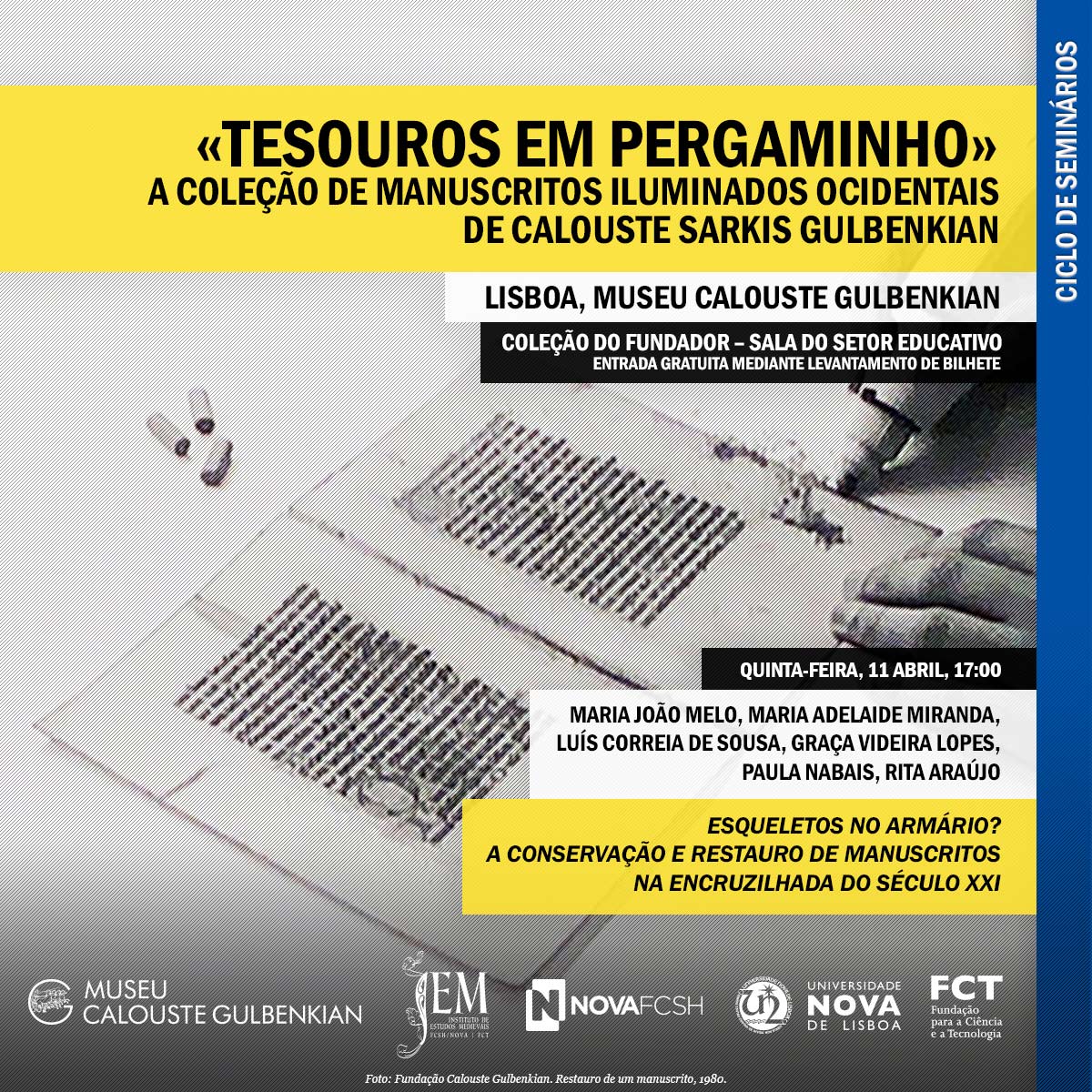Seminar Cycle: «Tesouros em Pergaminho» – Esqueletos no armário? A conservação e restauro de manuscritos na encruzilhada do século XXI
11.04.2019 | 17:00
Founder’s Collection – Educational Sector Room
Calouste Gulbenkian Museum, Lisbon

The final session in this seminar cycle focuses on the preservation and restoration of medieval illuminations, based on the research coordinated by Maria João Melo and Adelaide Miranda and, more recently, Graça Videira Lopes.
A historical, artistic and literary heritage of unparalleled value, the illuminated manuscript is one of the most original artistic and cultural expressions of the Western Middle Ages. Research has shown that the works face major challenges as regards their preservation. While on the one hand, while we have some original colours, on the other hand, the phenomena of degradation require measures be taken so that medieval illumination does not disappear. It will be fundamental that the decisions taken result from in-depth and interdisciplinary reflection. To achieve this, a number of questions must from the outset be asked: Is it imperative to restore the illumination? How can we stabilise the pictorial layers and the writing inks? What impact do the treatments we propose have on our perception of their colours and future preservation?
This session will take as its starting point the example of the Sharrer Scroll – and the controversy surrounding its restoration work – and some illuminated manuscripts from the Calouste Sarkis Gulbenkian collection (Bible, LA211; Lamoignon’s Book of Hours, LA237 and Missal Acciaiuoli, LA236).
This session takes place as part of the cycle of seminars «Tesouros em Pergaminho – A coleção de manuscritos iluminados ocidentais de Calouste Sarkis Gulbenkian» (Treasures in Parchment – The Western Illuminated Manuscript Collection of Calouste Sarkis Gulbenkian), the result of a partnership between Calouste Gulbenkian Museum and the Institute of Medieval Studies (IEM) of the School of Social Sciences and Humanities, NOVA University (NOVA FCSH).
Location: Lisbon, Calouste Gulbenkian Museum, Founder’s Collection – Educational Sector Room
Organisation: Calouste Gulbenkian Museum; IEM-NOVA FCSH
